Somaclonal Variation and its Applications | Botany Optional for UPSC PDF Download
| Table of contents |

|
| Introduction and History |

|
| How Somaclonal Variations Occur In Tissue Culture Crops? |

|
| Advantages And Disadvantages Of Somaclonal Variations |

|
| How To Identify Somaclonal Variation |

|
Introduction and History
Tissue culture or clonal propagation in agriculture offers a significant advantage in producing crops that are highly uniform within a clone population. However, it's important to note that genetic variation can still occur in these plants.
This genetic variation arising from any type of cell or tissue culture is referred to as "somaclonal variation." Such variation can occur in isolated protoplasts, undifferentiated cells, calli, and plant tissues generated under in vitro conditions or tissue culture. The term "somaclonal variation" was first introduced by scientists Larkin and Scowkraft in 1981.
Before the first report of genetic variation in sugarcane in 1971, tissue cultures were widely used for the propagation of many horticultural plants, including papaya, strawberry, banana, cucumber, tomato, and citrus.
However, following this discovery, genetic variations have been observed in numerous crops. In the context of commercial horticulture, somaclonal variations are typically considered undesirable and problematic. These variations can lead to a loss of genetic uniformity in crops, which is often undesirable in agricultural production.
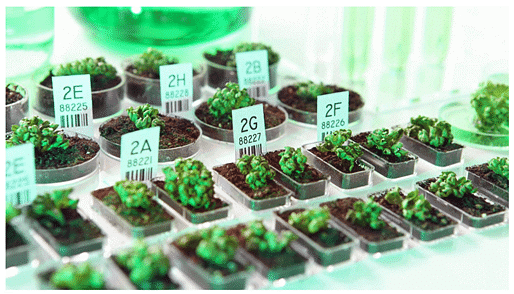
One significant source of this variation is chromosomal rearrangements, which can lead to differences both at the genetic level (in terms of genes) and at the phenotypic level (in the physical appearance or characteristics of the plant). Genetic variations resulting from chromosomal rearrangements can be attributed to changes in chromosome structure (such as translocations, deletions, insertions, and duplications), alterations in chromosome numbers (including polyploidy and aneuploidy), or modifications in DNA sequences (such as base mutations).
However, it's worth noting that while somaclonal variation has its disadvantages, it can also offer advantages and serve various purposes in plant breeding and research. These variations can sometimes lead to the development of new and desirable traits in plants, potentially contributing to the improvement of crops and the creation of novel varieties with valuable characteristics.
How Somaclonal Variations Occur In Tissue Culture Crops?
Somaclonal variations predominantly stem from mutations that occur during tissue culture. These mutations can be triggered by various stress factors, including imbalances in hormonal levels in the culture media, exposure to chemicals during surface sterilization, and physical damage to the tissues. In many instances, oxidative stress has been identified as the primary cause of somaclonal variation in tissue-cultured plants.
- Explant Source: The genetic stability and fidelity of explants (tissue samples used for culture initiation) vary depending on their source. Undifferentiated or meristematic tissues like cambium, procambium, and pericycle explants tend to produce fewer variations. In contrast, highly differentiated tissues such as stems, roots, and leaves, which go through an intermediary callus phase during culture, are more likely to yield variations. The choice of explants can influence the nature and frequency of somaclonal variations.
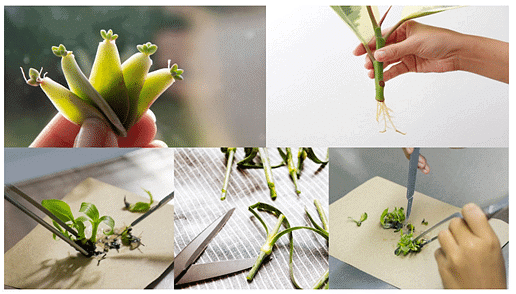
- Media Components: Plant hormones are a major contributor to somaclonal variation. Imbalanced ratios of hormones in tissue culture media can lead to polyploidy in plants, while their absence or low concentrations can result in normal plant development. For instance, the addition of auxins to culture media for calli or cell suspension can induce somaclonal variation due to increased DNA methylation. Additionally, both the concentration and type of plant growth regulator (PGR) used can influence somaclonal variation.
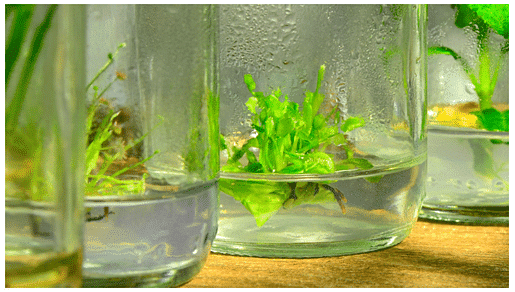
- Genotype Effects: The genotype of the plants plays a crucial role in inducing somaclonal variations, and it can be highly influenced by environmental stress. Different plant genomes respond differently to various stress conditions. Some genomic components help plants resist stress and maintain stability during tissue culture, while others render them more susceptible to variations.
- Regeneration Systems: The organization of plant cells is a key factor in determining genetic stability. Loss of cellular control can lead to somaclonal variations during tissue culture. Regeneration systems can be ranked in terms of genetic stability as follows: micropropagation using preformed structures (such as shoot tips or nodal explants) > shoots derived adventitiously > somatic embryogenesis > organogenesis from callus, cell, and protoplast cultures. Regenerating plants without an intermediate callus formation stage and techniques like somatic embryogenesis and axillary branching have shown promise in reducing somaclonal variations but do not guarantee their complete elimination.
- Duration and Number of Culture Cycles: The number of subcultures and their duration directly influence the occurrence of somaclonal variations in tissue-cultured plants. Increasing the number and duration of subcultures can elevate the rate of somaclonal variations. Rapid multiplication of plant tissues during cultures can also lead to genome instability and induce somaclonal variations. This has been observed in crops like wheat and micropropagated bananas during extended subculturing.
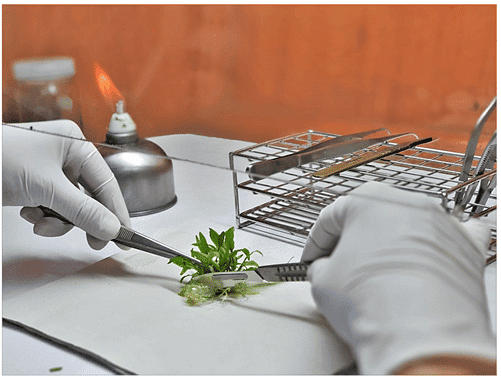
Advantages And Disadvantages Of Somaclonal Variations
Advantages of Somaclonal Variations
- Crop Improvement: Somaclonal variation plays a significant role in enhancing crop varieties.
- Introduction of New Varieties: It provides a valuable method for introducing new plant varieties, particularly in the cultivation of ornamental plant species.
- Breeding New Species: Somaclonal variation can aid in the creation of entirely new plant species.
- Specific Trait Introduction: This technique allows for the introduction of specific desirable traits in plants, such as resistance to various diseases, pathotoxins, herbicides, and both biotic and abiotic stresses.
- Secondary Metabolite Production: It can be used to increase the production of secondary metabolites in plants, which have various applications, including medicinal and industrial uses.
Disadvantages of Somaclonal Variations
- Undesirable Characteristics: Somaclonal variation can introduce undesirable traits or characteristics in plants.
- Genetic Instability: Variants produced through somaclonal variation can be genetically unstable, making their characteristics unpredictable.
- Field Trials: Multiple rounds of field trials are often required to evaluate the performance of somaclonally derived variants.
- Unpredictable Outcomes: It can produce unpredictable and sometimes undesirable results, leading to potential setbacks in crop improvement efforts.
- Pleiotropic Effects: Somaclonally derived variations can exhibit pleiotropic effects, where one genetic change affects multiple traits and features in plants.
- Complex Traits: This technique is less suitable for addressing complex agronomic traits such as yield and overall plant quality, which may require more sophisticated breeding approaches.
How To Identify Somaclonal Variation
Somaclonal variations in plants can be identified and categorized at four different levels:
- Morphological Level: Variations at this level involve observable changes in the physical appearance of plants. These changes may include differences in plant height, abnormal pigmentation, alterations in leaf shape and size, among others. For example, variations in plant stature, such as tall or dwarf plants, are easily noticeable when plants are grown. However, it's important to note that these differences can sometimes be induced by environmental factors, which may limit the effectiveness of this approach for commercial plant production.

- Physiological Level: This level involves the examination of physiological responses in plants to various stimuli. Analyzing variations at the physiological level can be an effective way to detect differences in plants at a young stage, reducing overall losses. Criteria for physiological monitoring may include disturbances in gibberellic acid metabolism, changes in photosynthetic activity, and alterations in pigment synthesis within plants.

- Molecular Level: Changes at the molecular level encompass modifications in the structure and number of chromosomes. While some of these changes may manifest at the physical or morphological level when present at low concentrations, more advanced molecular studies such as restriction fragment length polymorphism (RFLP) are employed to identify variations when alterations are significant.
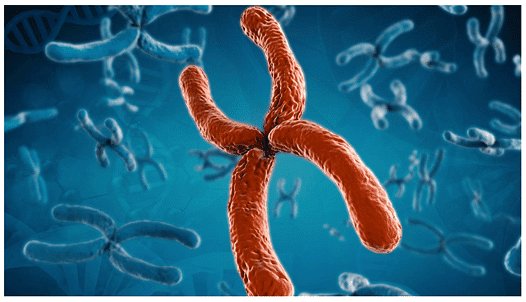
- Cytological Level: Observing variations at the molecular level can be a labor-intensive process. Therefore, techniques like flow cytometry are utilized to count and examine chromosomes. Flow cytometry is a convenient and rapid method compared to other available techniques for identifying somaclonal variations in tissue-cultured plants. This level of analysis provides detailed insights into the chromosomal makeup of the plants, facilitating the identification of genetic variations.
Get PCT Consulting Services To Solve Your Plant Tissue Culture Challenges
- In addition to somaclonal variations, tissue culturists encounter various challenges such as vitrification, contamination, acclimation issues, low yield, media browning, and more. Neglecting these challenges can result in the loss of cultured material, wasting time, effort, and resources.
- The first crucial step in addressing these challenges is identifying their root causes or understanding what may have gone wrong in the tissue culture process. If you find yourself struggling with these issues, PCT (Plant Cell Technology) consulting services can provide valuable assistance.
- By opting for PCT consulting services, you can engage in one-on-one phone conversations with their tissue culture experts. During these calls, you can freely ask any questions you have related to your tissue culture process and receive immediate potential solutions to these problems.
- Additionally, PCT offers a range of high-quality laboratory-grade tissue culture products and equipment in their store, providing you with the tools you need to strengthen your journey in tissue culture.
|
179 videos|143 docs
|















